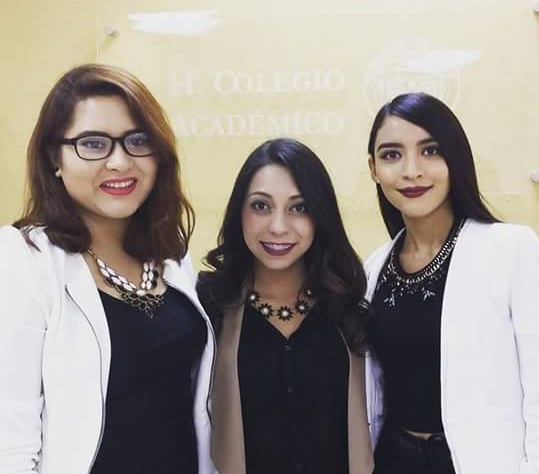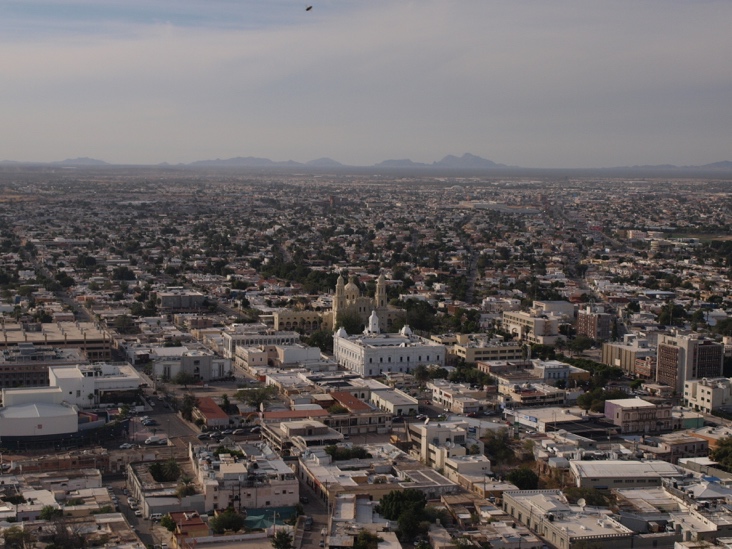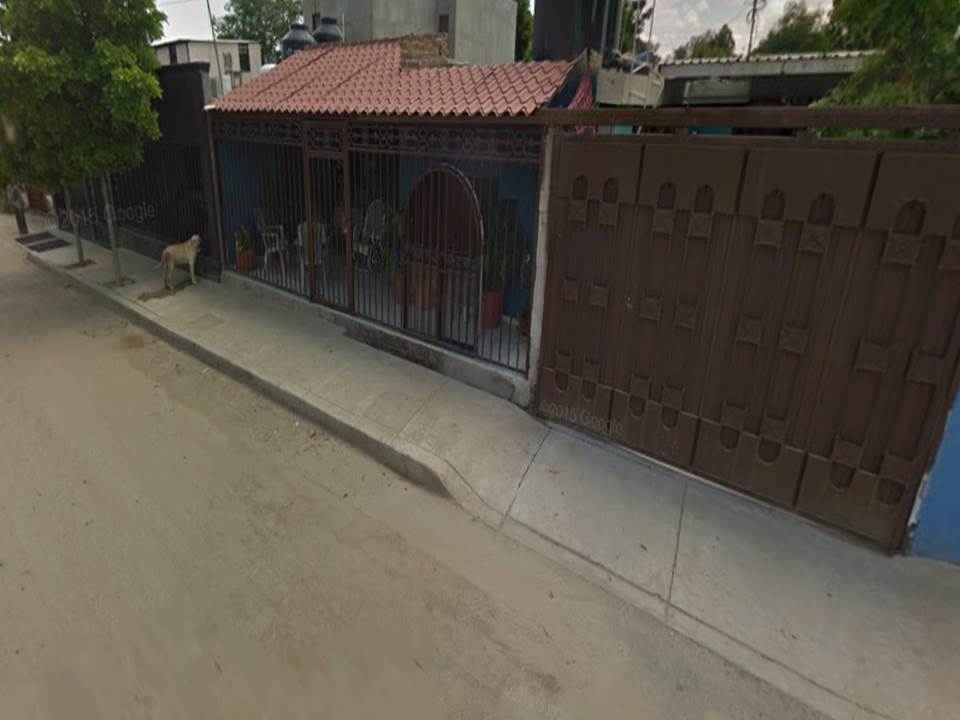 Ana Melissa, Maria Alejandra, and Miryam Fernanda were awarded the 2016 IWSN Student Prize in July. They are undergraduate students at Universidad de Sonora in Hermosillo, Mexico. This summer, they conducted a brief but informative study and submitted a complete report to the local water agency. Here, they explain their research.
Ana Melissa, Maria Alejandra, and Miryam Fernanda were awarded the 2016 IWSN Student Prize in July. They are undergraduate students at Universidad de Sonora in Hermosillo, Mexico. This summer, they conducted a brief but informative study and submitted a complete report to the local water agency. Here, they explain their research.

Introduction
The world is currently facing a severe water crisis. Therefore, it is extremely necessary to be aware of the value that water has for our lives, for the ecosystems, and the role it plays in our survival and our wellbeing. For this reason, it is essential to achieve water security, because it provides water in acceptable quantity and quality, for our health, and for the survival of every living organism. Water security is about having a sustainable water source, for different social uses including economic development, health, food production, energy, and for the environment.
Methods
For this reason, we conducted the study “Promoting water conservation at the household level in Hermosillo, Mexico.” The sample size was ten households, whose homes are located in the north, centre, and south of the city. We studied the water fees and related water consumption volumes from their water bills for the period between June 2015 and August 2016. We obtained the water bills from the website of the local water agency, Agua de Hermosillo. We also collected data interviewing people living in the selected households on 18 June 2016. The interview included demographic data and 29 questions covering the following topics: household description, water consumption, quality of the water service, payment culture, and water conservation practices.

Results
Household description. Our results show that 100% of the buildings of the selected households are connected to the water and drainage system, but only 80% of them have a water meter. From this 80% (eight buildings), one has a meter that does not work, impeding access to information on water consumption for this household.
None of the selected households use their residential building for a commercial activity (such as hair salon or cafeteria – in Mexico, it is common practice to open a small family business in a single-family building). In addition, none of the buildings has a water leak that would have caused an increase in water consumption during the study period. The socio-economic level of the neighborhoods where the households live are located is predominantly medium-income level. The average number of people living in the household is three, and are aged between 1-65 years old.
Water consumption. People in all of the selected households drink purified water only. They consume an average of 2.9 water cooler bottles (5 gallon containers) of purified water per week. The activities that consume the most piped water are the toilets, bathrooms and laundry, while the activities that consume the least amount of piped water are landscape irrigation and car-washing.
We found that the household that used water the most consumed 37 m3 (although this building does not have a water meter). The lowest water usage was 9 m3. Both the highest and lowest water consuming households have three people living there. The average water usage is 19.5 m3. The highest amount of water consumption per person is 21 m3 and the lowest is 3 m3, with an average of 7.85 m3 per person.

Quality of water service. The local water agency (Agua de Hermosillo) provides a service that was graded by the participants. On average, they graded the service as “moderate,” giving it a score of 7.4/10. Likewise, they graded customer service as “moderate” with a score of 6.8/10.
Payment culture. According to the participants, water bills arrive on time, and similarly, all of the head of households pay their water bills on time, before the due date. Most of them consider the fees “fair,” except for three of them who consider the fees “expensive,” and suggested they should be lowered by 15-50%. However, most of the participants agree with the fees and some participants even commented that they should be increased by 5-10%.
Comparing the established fee per cubic meter from the Ley de Ingresos y Presupuesto de Ingresos (Income and Budget Law) of the municipal government for the 2016 fiscal year with the fee charged to every household, we found that there were a series of discrepancies among the charges. In some cases, households are charged more than the established fee and sometimes less. In addition, we found that the water bills of the households that do not have meters, or have meters that are not working, show the same volume of water consumed, yet the charges differ each month.
We found several irregularities in the way the water utility operates, which raises the following questions:
- Why don’t they charge the established fee (from the law) according to the consumed volume?
- On what basis does the water agency vary the charges every month when the volume of water consumed stayed the same?
- How come the volume of water consumed varies in the bills of the households that do not have a water meter?
Water conservation practices. All of the households interviewed agreed on the importance of saving water and committed themselves to save water so that savings were shown in their water bill for July and August 2016. We studied their water savings by comparing water consumption in these months of 2016 with the same months last year.
Even though the ten households agreed to save water (not only for the purpose of this research but for the importance of water conservation and in order to stimulate the sustainable use of water), only one of the households showed a decrease in water usage during July 2016 compared with July 2015. This household showed savings of 4 m3. In two other households, the level of water consumption was the same, but this was not surprising because one of these two households does not have a water meter, and the other one has a meter that does not work. The remaining households increased their water usage. The highest volume of water consumed occurred in July 2016 and was 33 m3 (building without a water meter). The lowest volume of water consumed was 7 m3 and the average was 18.9 m3.
[Some of the houses of the participants]
During August, we found that four households used less water, with savings ranging from 1-7 m3. In two households, water consumption stayed the same (again, these households live in buildings that do not have a water meter or have a meter that does not work). For the rest of the households, water consumption actually increased. The highest volume for August 2015 was 28 m3 (household without a meter), the lowest was 7 m3, and the average 16.5 m3. During August 2016, the highest volume was 35 m3 (household without a meter), the lowest was 8 m3 and the average 17.4 m3.
We found that although there is a prevalent water conservation culture among the households that we interviewed, water savings were not significant. However, all of the participants reported saving water for landscape irrigation and car washing and all of them agreed to save water during July and August. We hypothesize that because Hermosillo has an extremely hot summer, these months are when water consumption peaks. Therefore, water savings were not manifested in their water bills.
Conclusion
We think that Agua de Hermosillo should improve the way they read and measure water consumption at the household level and that every household should have a meter that works. This would allow a more efficient way to control water consumption.
Even though the majority of the participants are aware of the importance of water conservation, there is still a need to raise awareness on this topic so that it becomes a habit. Increased water scarcity in this region is an impact of climate change; however, many participants do not know about climate change. For this reason, we have to inform society and develop a culture of climate change mitigation and adaptation that can be translated into public policy and action plans with clear strategies.
Water security is a goal that all of us have to strive for – a co-responsibility between government, public and private institutions, and society. Results from this study should motivate Agua de Hermosillo to evaluate their operations in order to improve water management, and the residents of Hermosillo must aim to save water and pay their bills regularly and on time.



